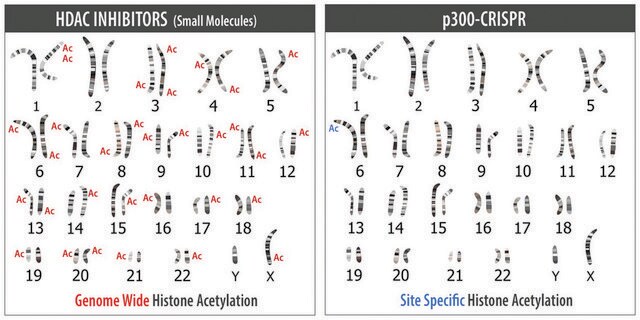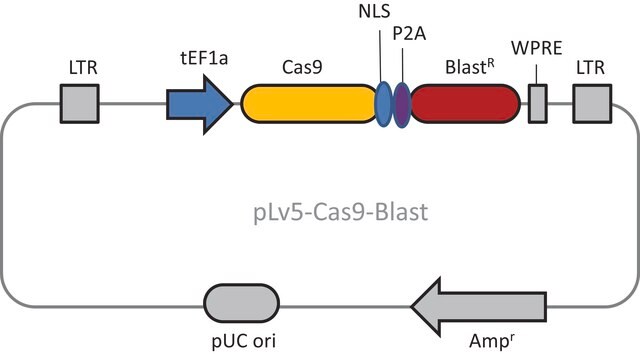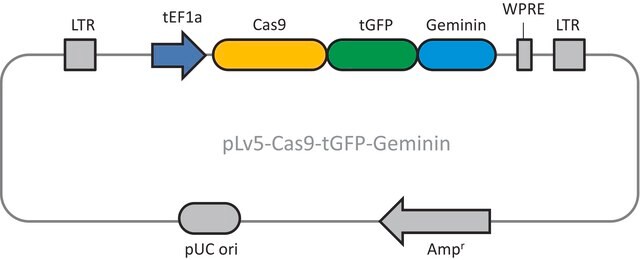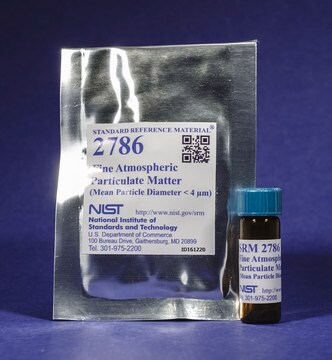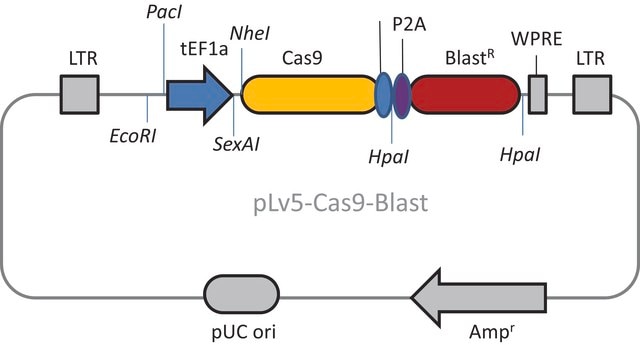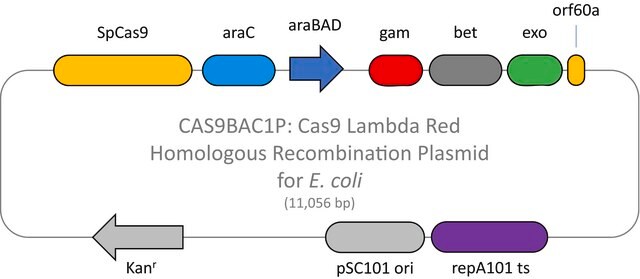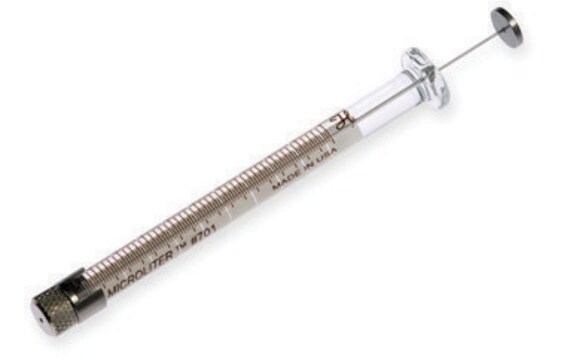CAS9HYGROVP
Cas9 Hygromycin Lenti Plasmid
Se connecterpour consulter vos tarifs contractuels et ceux de votre entreprise/organisme
About This Item
Code UNSPSC :
41106609
Nomenclature NACRES :
NA.51
Produits recommandés
Produit recombinant
expressed in E. coli
Forme
liquid
Conditionnement
vial of 50 μL
Concentration
20 ng/μL in TE buffer; DNA (1μg of plasmid DNA)
Application(s)
CRISPR
Sélection
blasticidin
Conditions d'expédition
dry ice
Température de stockage
−20°C
Catégories apparentées
Description générale
This product is a lentiviral plasmid that utilizes the EF1 alpha promoter to drive expression of Cas9 and a hygromycin resistance cassette linked by a 2A peptide (EF1a-Cas9-2A-Hygro) allowing for easy visualization of successful transfection or transduction. Use Sigma′s lentiviral Cas9 plasmid for generation of lentiviral particles and efficient production of stable cell lines expressing Cas9 for CRISPR based genome editing. Sigma′s Cas9-Hygro lenti plasmid is one part of a two part CRISPR system with individual Cas9 and gRNA expression vectors.
To order gRNA in any format click here
To order gRNA in any format click here
Application
Functional Genomics/Target Validation
- Creation of gene knockouts in multiple cell lines
- Complete knockout of genes not amenable to RNAi
- Manufacture of Cas9 expressing Lentiviral Particles
Caractéristiques et avantages
- Highly specific and highly active
- Sequence verified
- Ready to use purified plasmid DNA
Principe
CRISPR/Cas systems are employed by bacteria and archaea as a defense against invading viruses and plasmids. Recently, the type II CRISPR/Cas system from the bacterium Streptococcus pyogenes has been engineered to function in eukaryotic systems using two molecular components: a single Cas9 protein and a non-coding guide RNA (gRNA). The Cas9 endonuclease can be programmed with a single gRNA, directing a DNA double-strand break (DSB) at a desired genomic location. Similar to DSBs induced by zinc finger nucleases (ZFNs), the cell then activates endogenous DNA repair processes, either non-homologous end joining (NHEJ) or homology-directed repair (HDR), to heal the targeted DSB.
Informations légales
Code de la classe de stockage
12 - Non Combustible Liquids
Classe de danger pour l'eau (WGK)
WGK 2
Point d'éclair (°F)
Not applicable
Point d'éclair (°C)
Not applicable
Faites votre choix parmi les versions les plus récentes :
Certificats d'analyse (COA)
Lot/Batch Number
Désolés, nous n'avons pas de COA pour ce produit disponible en ligne pour le moment.
Si vous avez besoin d'assistance, veuillez contacter Service Clients
Déjà en possession de ce produit ?
Retrouvez la documentation relative aux produits que vous avez récemment achetés dans la Bibliothèque de documents.
Notre équipe de scientifiques dispose d'une expérience dans tous les secteurs de la recherche, notamment en sciences de la vie, science des matériaux, synthèse chimique, chromatographie, analyse et dans de nombreux autres domaines..
Contacter notre Service technique
